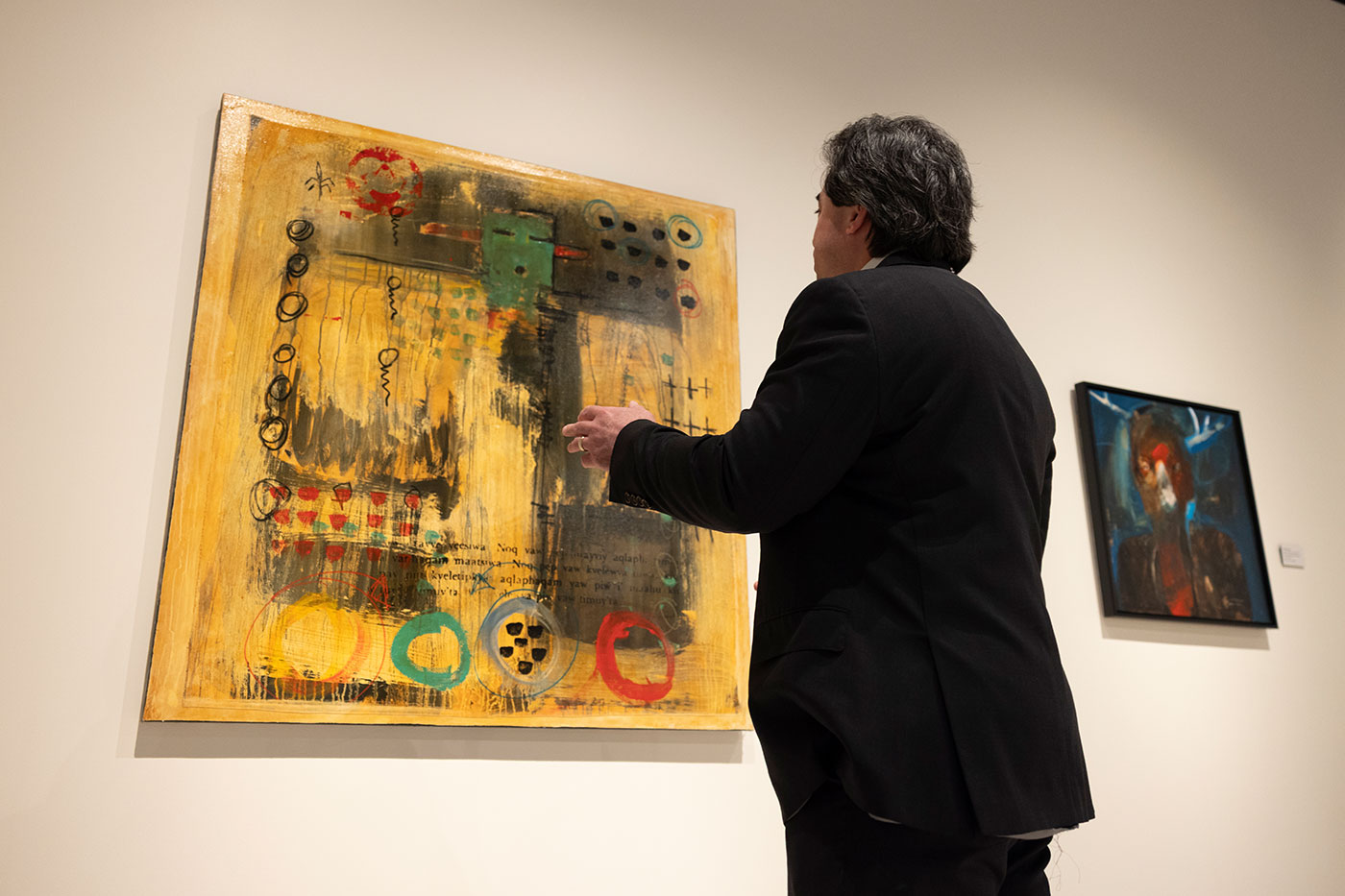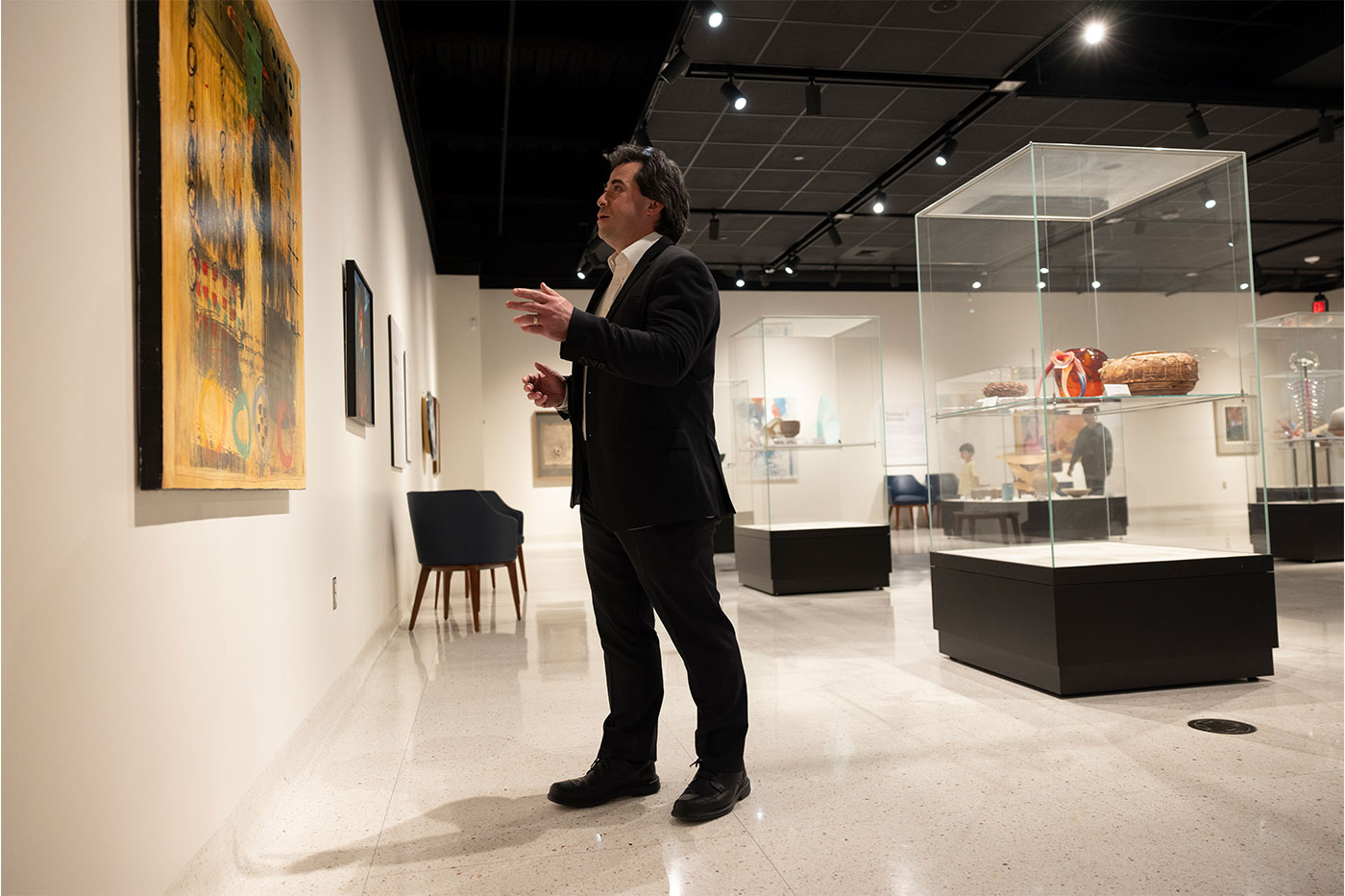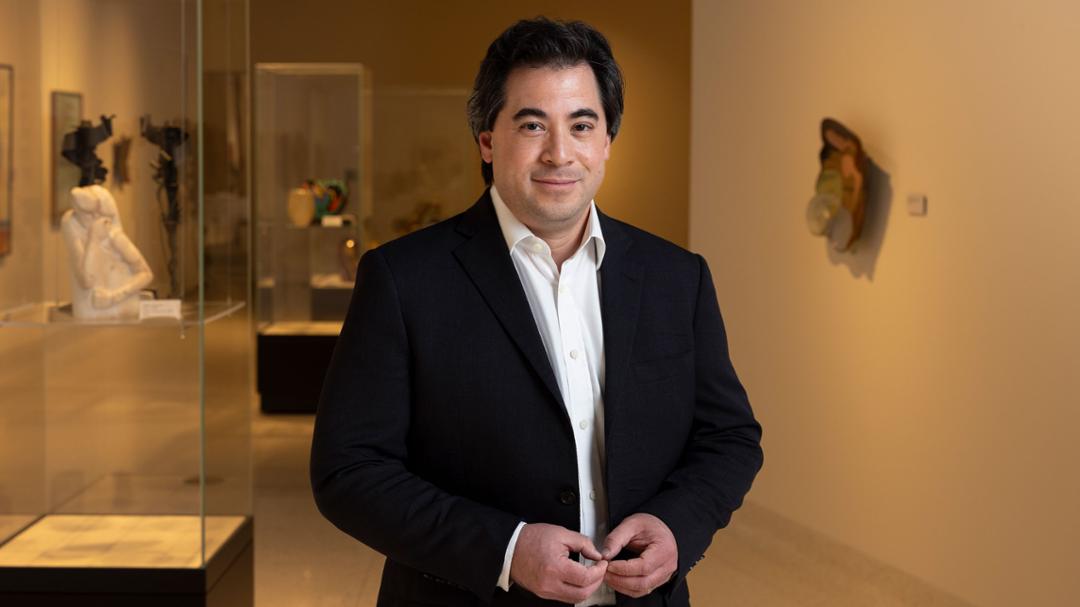Executive Director Aaron Pan leans on his own curiosity for developing that attribute within museum faculty, staff and guests.
Tucked away on the outskirts of the Texas Tech University campus, the Museum of Texas Tech is home to a myriad of collections including textiles, history, art, anthropology and paleontology.
Some may consider the museum a hidden gem, but not Executive Director Aaron Pan.
“A gem is supposed to be shown,” Pan said, chuckling about the pejorative nature of a hidden gem. “Museums are knowledge centers for communities, meant to hold not only the objects and art, but also the understanding and stories of the community in perpetuity.”
Pan earned his doctorate in geology with an emphasis in paleobotany from Southern Methodist University. He then worked as a curator of science for the Fort Worth Museum of Science and History where he fell in love with the idea of working at museums. Here was a place where he could tap into all facets of his curiosity, from caring for the museum’s collections and planning educational programming to conducting his own research.
“The museum is a place of lifelong learning,” Pan reflected. “If you don’t use your muscles, they atrophy. Well, it’s the same thing with learning; you have to always continue to learn. Museums are one of those places where it’s a fun way of learning.”
Fostering Curiosity
Pan’s first executive director position came in 2012 at the Don Harrington Discovery Center in Amarillo, Texas.
“As an executive director, I like to see projects reach fruition, but the big thing I really like is people,” Pan said. “I like seeing different personalities and people at their best, solving problems. The executive director helps steer the ship in a certain direction.”
Eight years later, Pan joined the Museum of Texas Tech in June 2020. The middle of the COVID-19 pandemic was not ideal for museums that had depended heavily on in-person attendance and events, yet Pan was eager to meet the moment.
Leaning on his curiosity, Pan embarked on a listening tour and met with the museum and university staff and faculty to better understand the museum’s strengths, weaknesses and opportunities. He also began connecting with community members and leaders to better understand their interests and narratives and ways the museum could lend its support.
Pan’s vision for the museum is to be considered the most preeminent museum in Texas and the Southwest. Working toward that goal, he spent his first five years emphasizing community-focused outreach efforts and encouraging faculty and graduate student research.

A museum, according to Pan, plays four key roles within its community: caretaker, sharer, stimulator and storyteller. He credits the team of 13 curators across all areas of the museum for ensuring these four roles are well performed.
A shining example is the “Art of Seeing” events held regularly at the museum. Much like a sommelier may help wine drinkers better discern tasting notes, Tracee Robertson, the Helen DeVitt Jones Curator of Art, helps attendees develop observation and communication skills to better “see” art.
It is important to Pan the curators have space and encouragement to develop similar programs and exhibitions that connect the museum with the broader interests of the general public.
“Each curator brings a different point of view and a different expertise, which is fantastic,” Pan said. “We’re a multi-disciplinary museum. Guests may have one interest they consider a priority, but people are dynamic. They have lots of interests.”
Harnessing Curiosity
Pan views the museum’s proximity to a large university like Texas Tech as an ideal research environment.
“Academia is not only there to be a consumer or a disseminator of knowledge; it’s there to actually produce knowledge,” Pan said. “That is what’s really key and amazing: the production of knowledge.”
He leads the museum’s research efforts by example, harnessing his curiosity and exploring a broad range of natural history topics. While his primary focus is paleobotany and studying floral composition of prehistoric East African forests, Pan also has extensively researched velvet ants, rare and endangered bees, and abalone species.
Living up to the idea of a knowledge producer, Pan worked with Kevin Williams from the California Department of Food and Agriculture and Joseph Wilson from Utah State University to write a new field book titled “Velvet Ants of North America.”
“Nobody had done a guide like this, and we were getting impatient,” Pan recalled. “We eventually said, ‘You know what? Why don’t we write the guide?’”
The guidebook helps to expand people’s understanding of velvet ants by providing high-resolution photographs and in-depth descriptions of nearly 460 different species of velvet ants. Pan said most people had little-to-no familiarity with velvet ants outside of the white thistledown velvet ant and the red velvet ant.
“We created a book so people can start observing them more and so we can get more information,” Pan said. “It’s selfish, but we’re really interested in how these things are living. But you need to first understand what you’re looking at before you can describe it.”
Sparking Curiosity
Over the next several months, the museum will play host to new and exciting exhibitions, meant to ignite attendees’ curiosity and help deepen the connection the museum has to the local community.

“I think the upcoming Yamaha exhibition is going to be a pretty interesting one,” Pan said. “I think it’s going to be one where it draws some new attendance.”
“Yamaha: The Rise of Two-Stroke Street Bikes” opened June 10 and runs through Sept. 7. It features a collection of 14 Yamaha two-stroke motorcycles and various marketing materials acquired over the last 50 years.
What also makes the exhibition special is the collector: he’s a Texas Tech alumnus and a long-time Lubbock resident.
“We want to build that kind of relationship with the community,” Pan said. “We want them to know that we’re a resource here for them and can also draw them into the Texas Tech sphere.”
Pan also is hoping to bring traveling pop culture exhibitions to the museum that help tell a broader history through the lens of familiar stories. One such exhibition is “Dressing the Abbey,” which features 35 costumes created for the series “Downton Abbey.” The exhibition explores the lives of the series’ aristocratic inhabitants and their servants and is set to open at the Museum of Texas Tech on Jan. 31, 2026.
“It’s a perfect fit with our clothing and textiles collections,” Pan said. “We want to take opportunities to reach out to more portions and interests of the community while still being complimentary to the areas of interest that the museum collects.”
With five years at the helm of the museum in the books and exciting plans for the future, Pan can’t wait for people to see the museum as a shining – not hidden – gem of Texas Tech.

